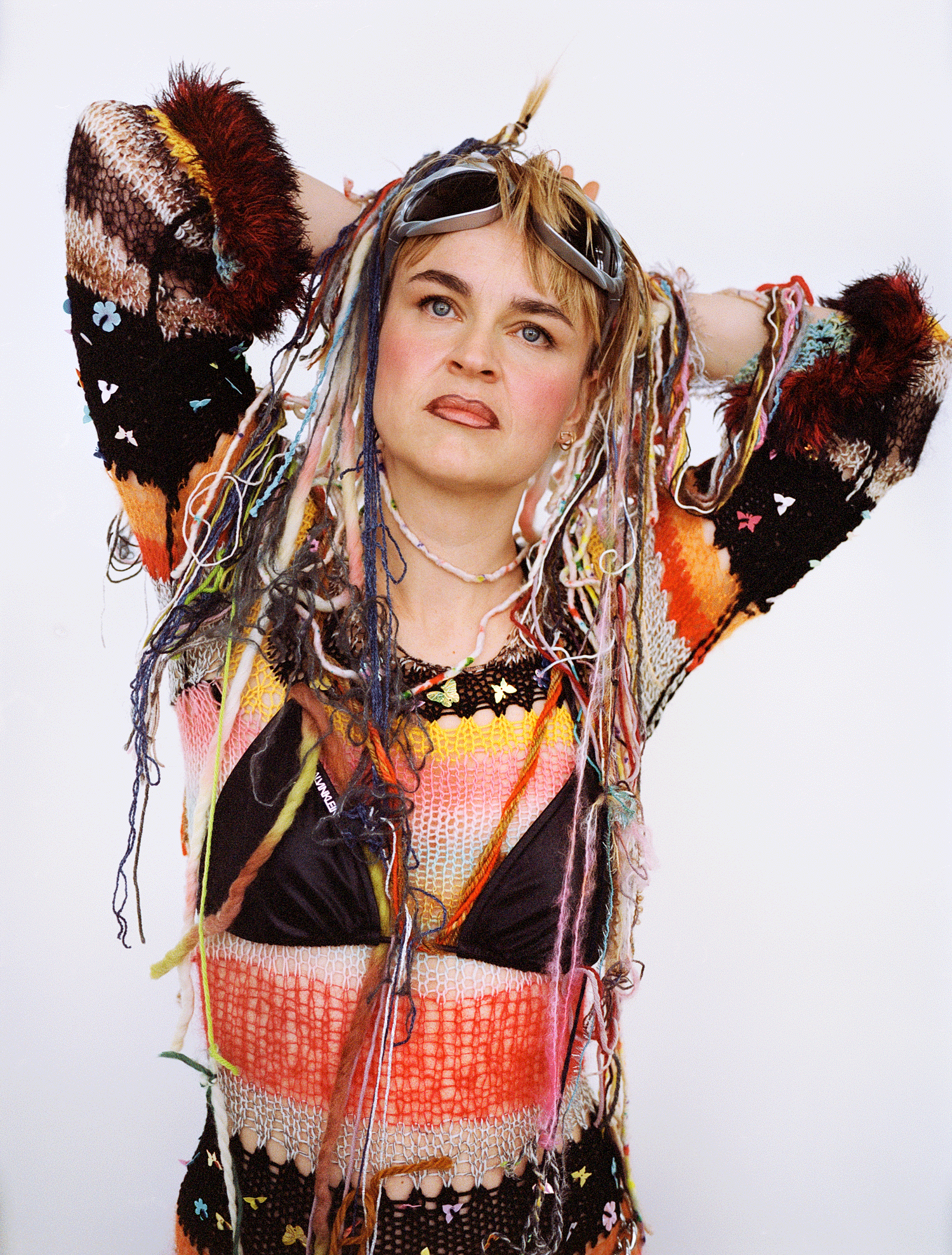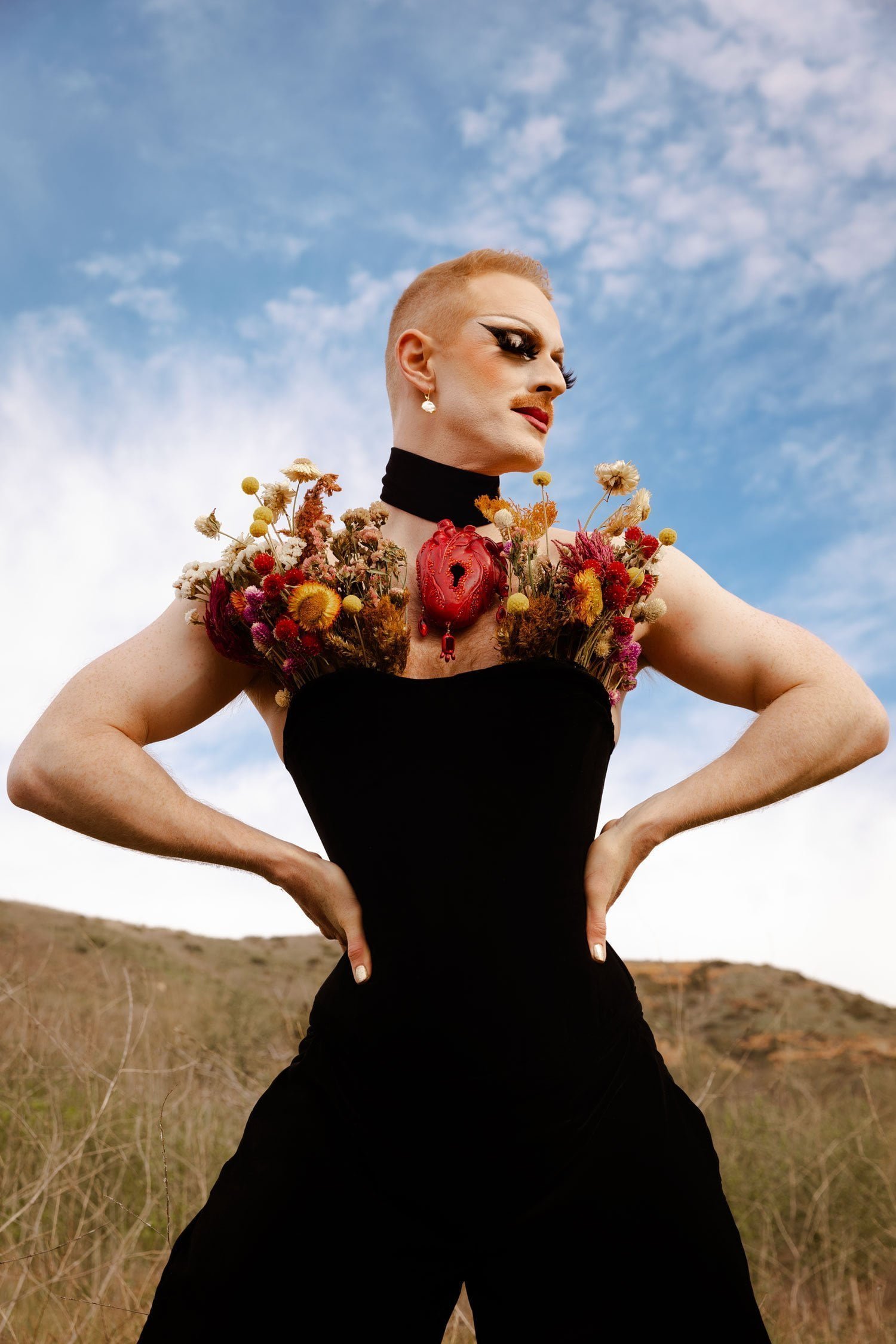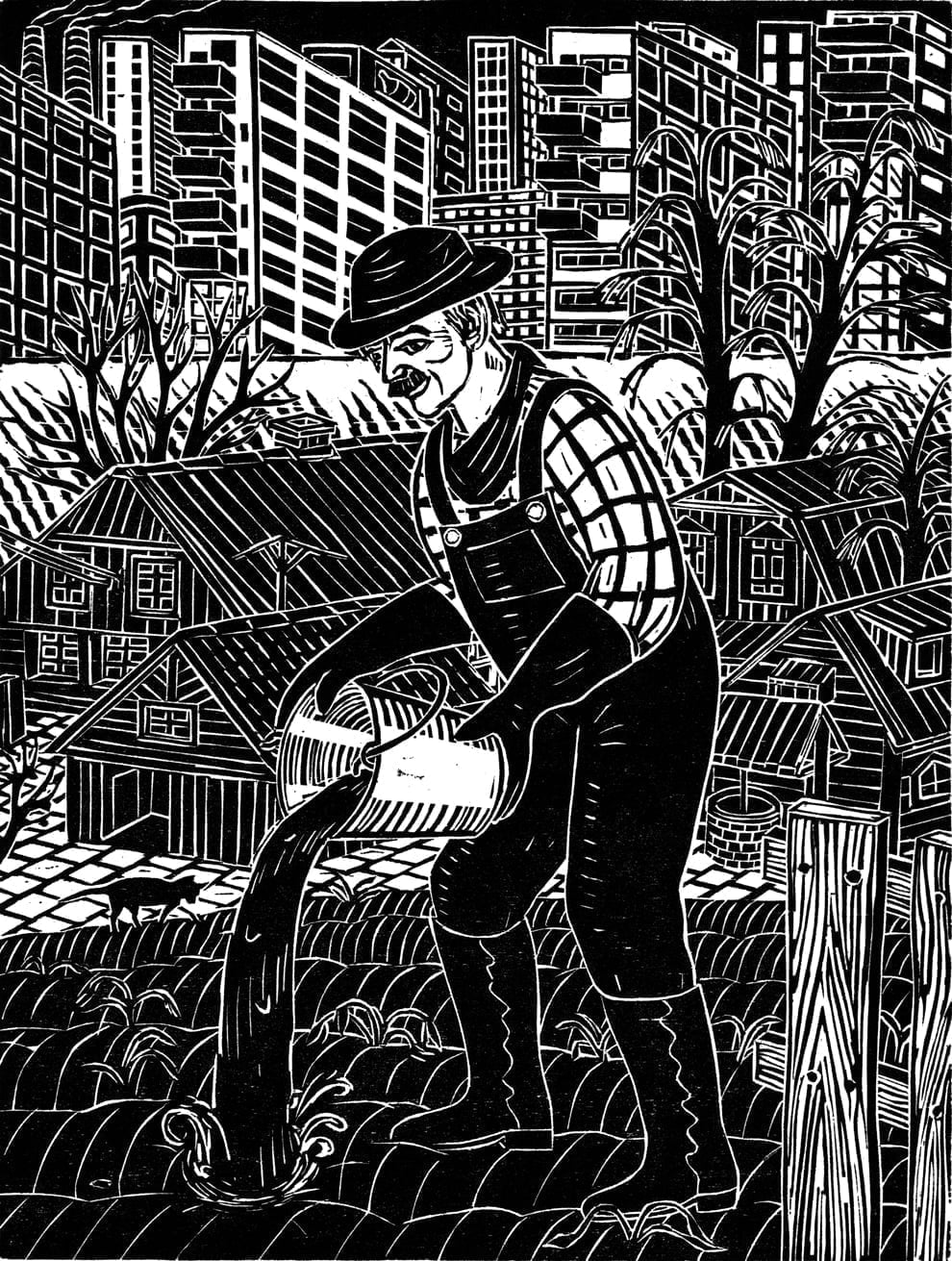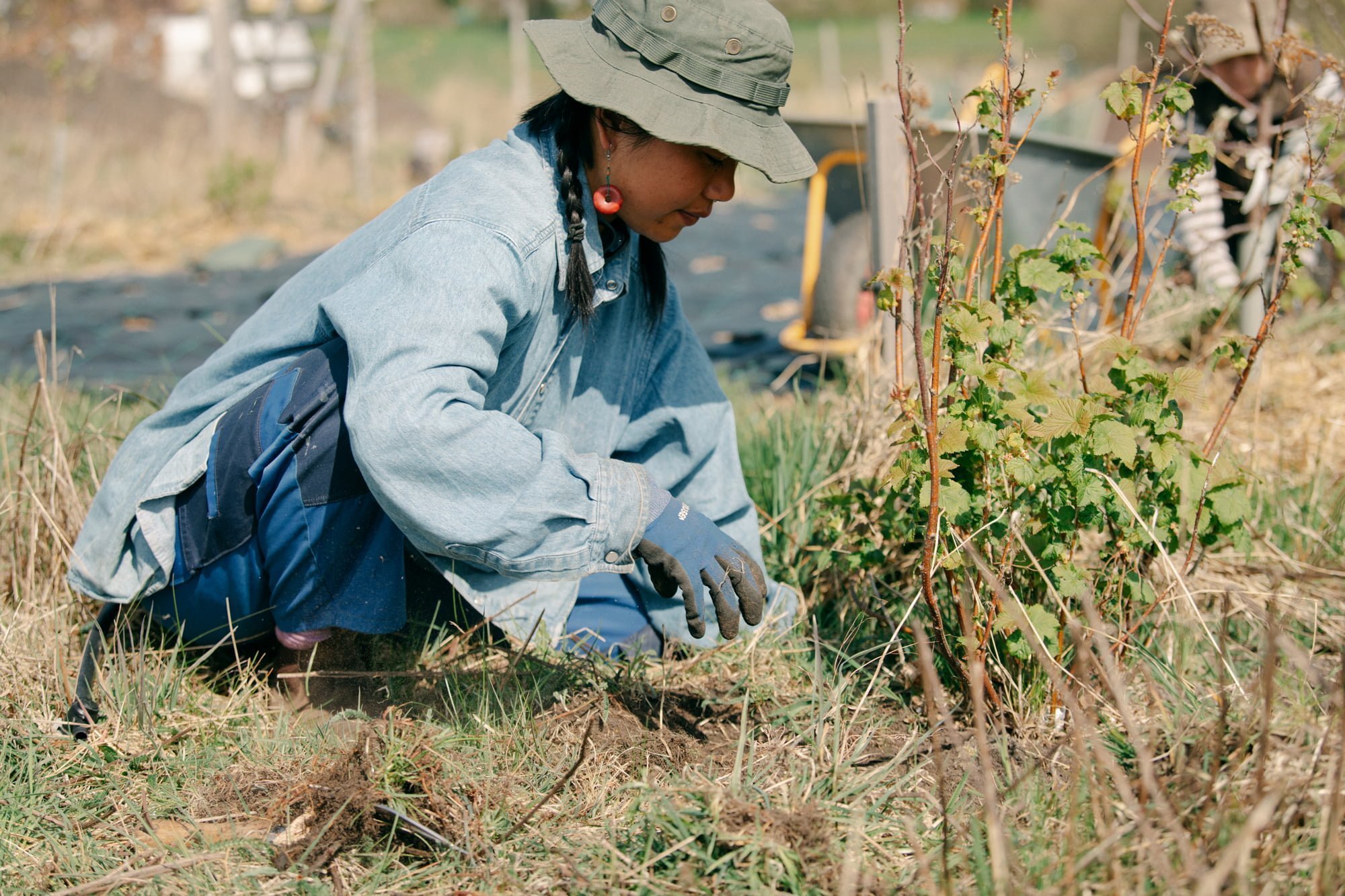The first rule of knitting? There are no rules.
I NEED TO BE MYSELF, I CAN’T BE NO-ONE ELSE…
If Laerke Bagger had a theme tune, it would be Supersonic by Oasis. Unconventional, gutsy and borderline punk in her approach, she’s sold knitwear to Miley Cyrus, written two outstanding knitting books (the second of which is coming out in English soon), and toured them, around Denmark at least, like a rock star. Trained at the Royal Danish Academy of Arts in Copenhagen where she specialised in hand knit design, she has been knitting since she was eight and is rarely seen without yarn in her hands. Her creations are colourful, anarchic, joyful and scrappy. Oh, and she’s a huge fan of Liam Gallagher. Welcome to a world where knitting can be punk, and fashion can be responsible.
“I’m not a philosopher, I just know that clothing alone is not gonna cut it anymore. You have to be responsible and you have to think”
Lærke Bagger
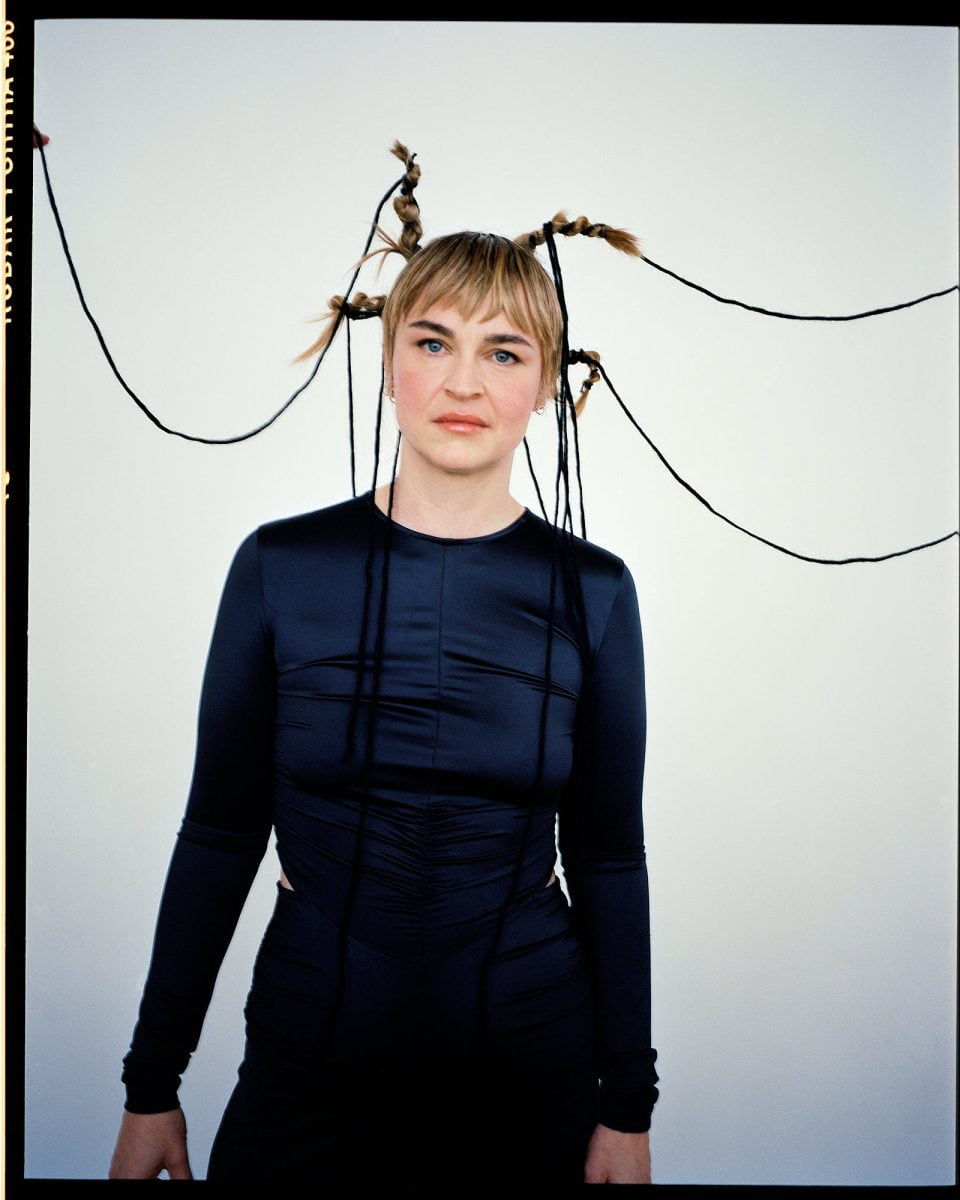
“You shouldn’t make a beautiful piece of clothing just because it’s beautiful. You know what I mean? It has to have something more,” she said. We’re in her studio, a colourful space in the north of Copenhagen where boxes full of colour-sorted yarn line the walls, and Barbies dressed in miniature versions of her designs stand on the window ledges. We’re talking about fashion.
“I’m not a philosopher,” she said. “I just know that clothing alone is not gonna cut it anymore. You have to be responsible and you have to think.”
“I’m not saying that it’s not exhilarating, looking cool and being beautiful – I tried it two days ago for the photoshoot [for this article] – but it’s not going to carry me through my entire year or whatever. It has to have something more like a backbone to it.”
Lærke is showing me around and introducing me to her work. As well as the Barbies and the boxes, there’s a wall of bookshelves containing those peculiarly yellow-tinged plastic-wrapped 1970s-era books you often find in charity shops, books about knitting from all corners of the world, and boxes of knitted creations from Iceland, the Faroe Islands and Greenland. It’s an orderly riot of colour and ideas, accessorised by unlikely items such as a polar bear claw necklace and a cupboard stuffed with sickly-green coloured velour fabric, and everything is in its right place. It’s a reflection of her approach: as a living example of Picasso’s credo: learn the rules like a pro so you can break them like an artist, Lærke may be a classically-trained and extremely well-read textile designer but she loves nothing more than to break the rules. She admits in her books that she doesn’t like to follow patterns – but she has written a book full of them, nonetheless.
“I’m slowly trying to dissolve the whole concept of knitting patterns,” she said. “So there are less patterns or more loose patterns in my second book. The book is about ways to approach knitting, ways to look at it and ways to look at fashion as well, much more than just copying what I do.”
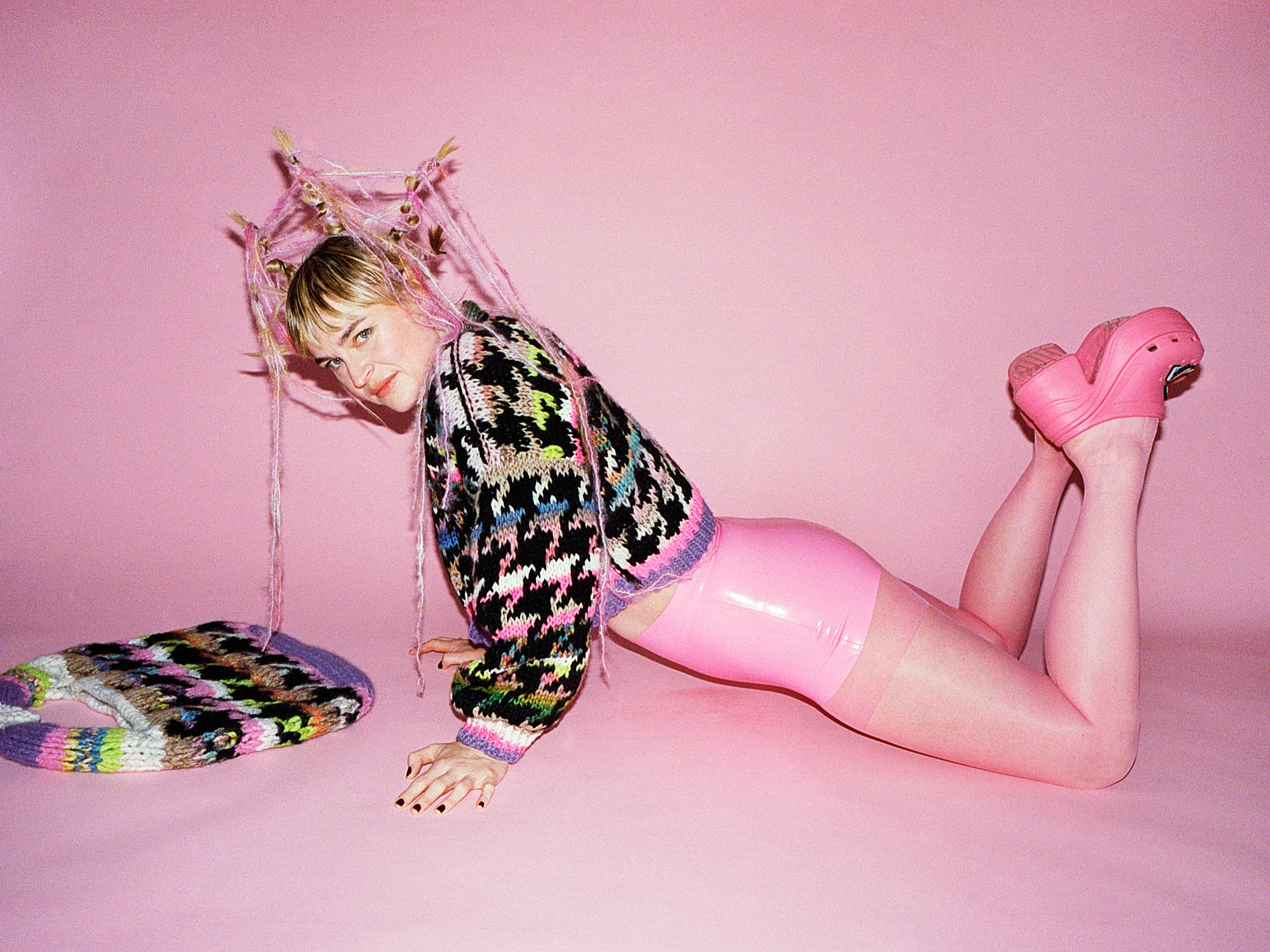
It’s a radical approach to a cosy genre that has relied on the classic template approach to guide knitters through the ages. Her books are compelling reading: a fusion of patterns, ideas, scrapbook pages, memoir-style essays and thoughts about her life and upbringing, with jumpers to knit along the way. Not to mention pictures of her knitting in her knickers, hanging out with friends (while knitting), and touring Greenland with Liam Gallagher’s face on her sweatshirt. The ideas are fun and full of a kind of reckless energy that says – it doesn’t matter if it’s not perfect, it’s more important how it makes you feel. It’s more about embracing the mistakes that come with venturing into unknown territory than seeking a singular way of doing things.
“It resonates with so many people, because it’s about feeling like you’re the odd one out and you don’t fit in. I’ve never felt like I fitted in with the crafting community. and then I slowly realised that there were so many people like me,” she said.
The essays delve deeper into a sense of what crafting can give – not just the idea of making something, but the knowledge that it brings people together, helps with anxiety and can fight our communal addiction to fast fashion at the same. Perfect isn’t the goal; there’s much more to it than that.
“I thought it was going to be so sweet seeing people on the street wearing something that I made,” she said. For some time, she had been selling her knitwear in upmarket Copenhagen boutiques. “But it’s so much better seeing people wearing something that they made. I also know that most of their stuff is made from recycled materials or dead stock or upcycled yarn, and then they don’t go out and buy a shitty bad quality jumper from the high street.”
Our latest magazine is packed with positive climate stories, like Laerke’s story. It contains thought-provoking interviews, beautiful photo galleries, green innovations and much more.
To further stoke this idea of empowering people to knit, rather than sell her own designs, she tours with her friend, hobby knitter Christine Feldthaus, with an interactive talk show where they talk, offer prizes, run competitions and generally share the joy of knitting with Denmark’s knitters. There’s an expectation that those turning up will knit along with them. Tickets are sold on Ticketmaster and the venues, which include some of Denmark’s top concert halls, regularly sell out.
“I’m really proud of it, but more than that, I’m interested in what knitting or crafting can do, besides being a craft. Like, creating communities and bringing people together.”
She also sees a future in using her platform to empower businesses, mainly small mostly women-owned businesses, independent dyers, wool producers, small pattern designers and crafting designers.

Lærke is wearing her own #3daydress. Blazer (around waist) and top in check pattern: Ganni. Stockings: vintage. Boots: New Rock
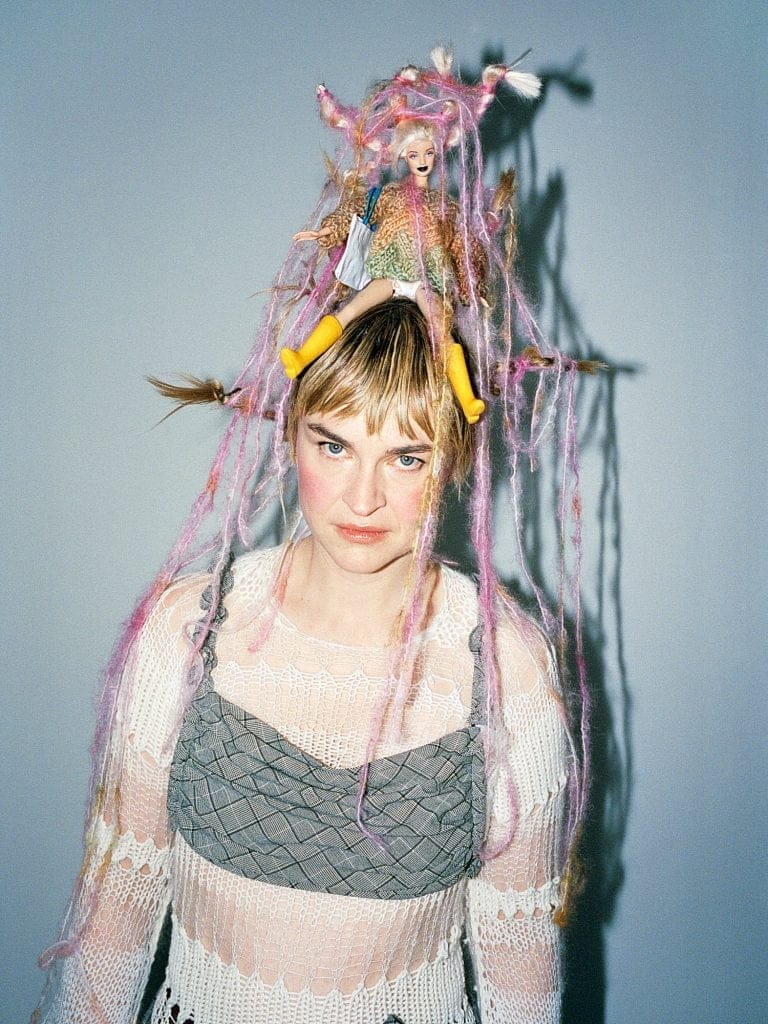
Barbie is wearing: Lærke Bagger #bitbybitsweater. Boots and underwear: Barbie’s own
“People ask, how can a sweater represent what’s within? I’m like, how can it not?”
Lærke Bagger
There are mentions of her mental health battles in her books, notably around the death of her father, and it’s clear that knitting has been a form of therapy for her, a way to knit away her worries and make something useful from them at the same time. They’re also striking pieces: a work of textile art in themselves that represent more than fashion to her.
“I’ve been asked: how can a sweater represent something within? I’m like, that’s a stupid question, how can it not, though? You wouldn’t ask a musician that, right? You wouldn’t ask an artist that.”
With Lærke, it’s never just knitting: it’s art, it’s an energy and it’s accessible to everyone. Reading between the lines, between the scrap techniques and rows of multi-coloured yarn, there’s a deep sense of fun powering the knits, a rebelliousness and a sense of play. This, along with knitting videos soundtracked by Metallica and knitwear designs that are deliberately joyful, provocative and colourful, have led to a significant social media following on Instagram (@laerkebagger).
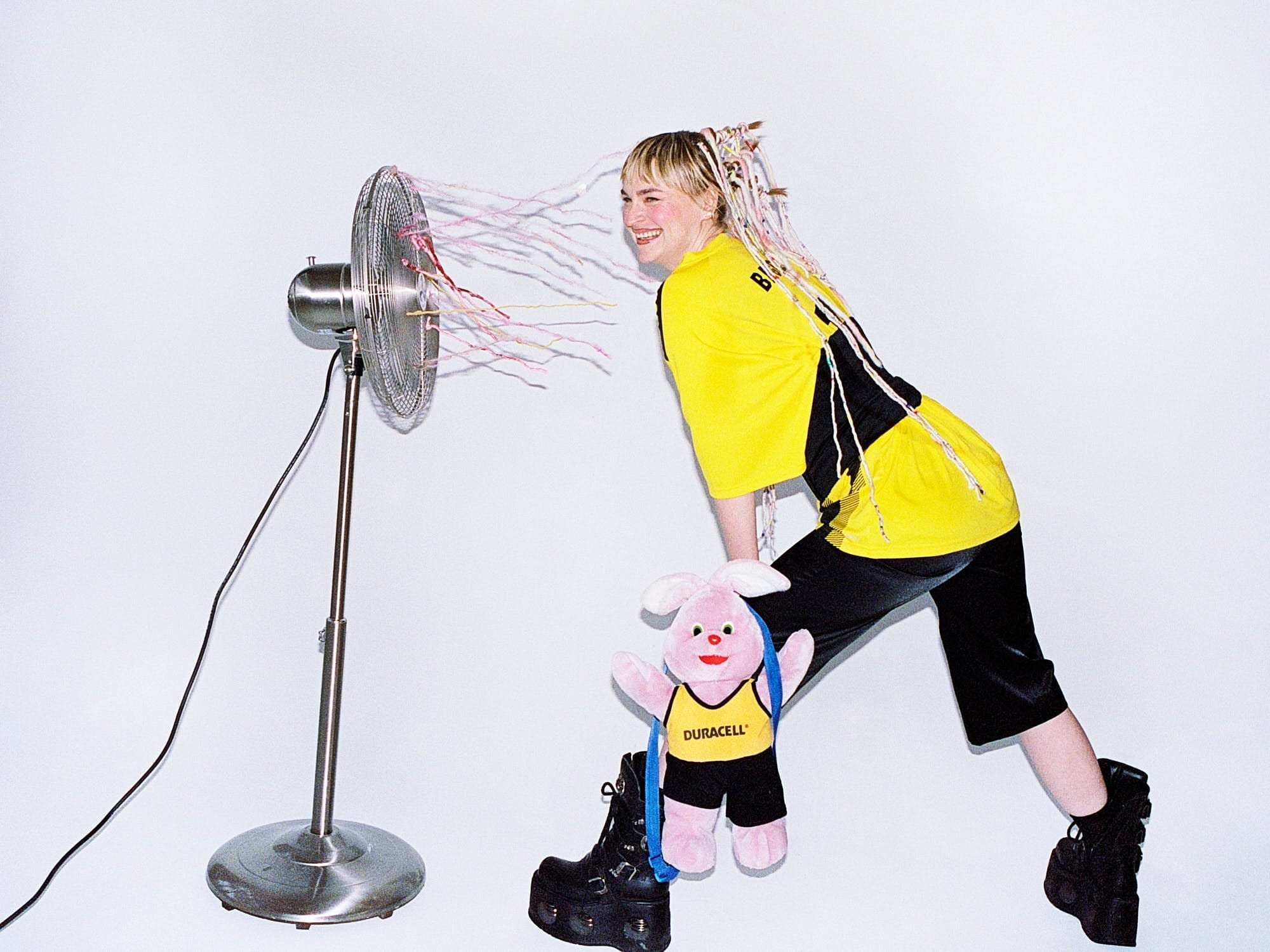
“People talk a lot about how bad social media is,” she said. “It’s also good. It’s also really good for the whole crafting community. We couldn’t have happened without social media, and every day I connect with crafters all over the world discussing how to do the perfect rib stitch or what wool is good wool. It’s part of the deal.”
It’s only a small step from community and the thoughts of how much better we are when we are connected, to grassroots activism. As we’re talking about community and media profiles and how long it takes to reply to every message, Lærke stops.
“I don’t want to say it, but I’m going to say it: it feels like the world is coming to an end. Don’t you? Don’t you feel like the world is coming to an end?”
Think too hard about fashion – about anything these days – and it feels like it’s all falling apart. The cost of living rises, the climate change news intensifies, the desperate need to know what to do next, and how to take positive action increases. Knitting might help with the anxiety but it can’t take away all the problems. We sit for a moment in the grip of existentialist dread. There’s no easy answer to any of it. So we talk about what is possible.
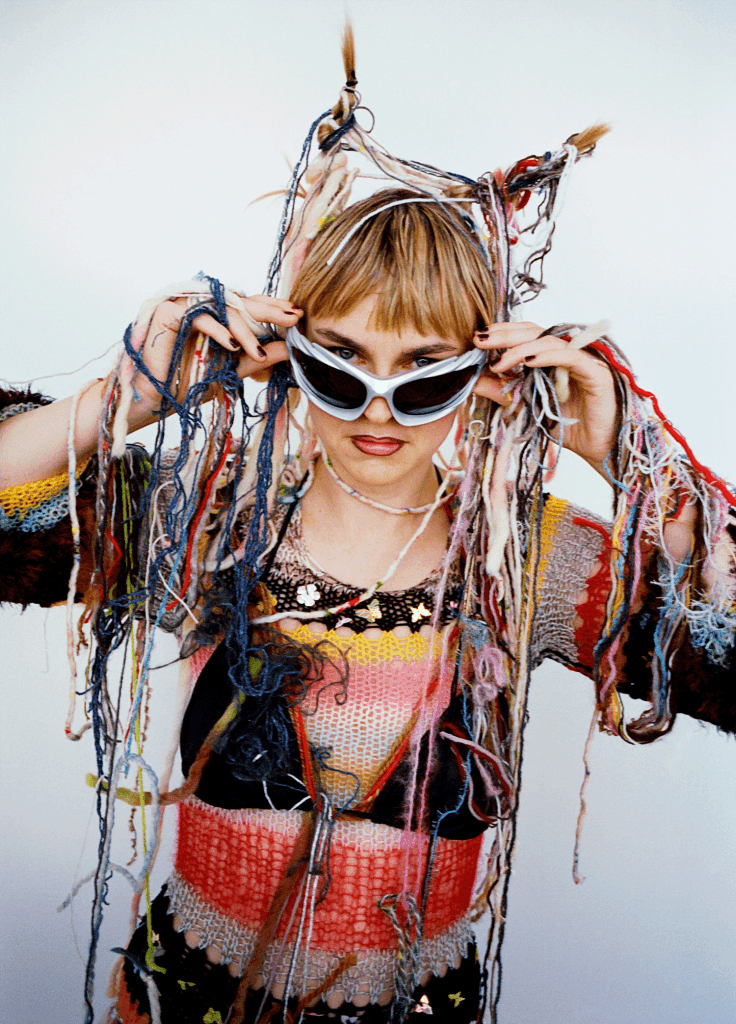
Lærke is wearing her own knitted #3daydress. Bikini top: Calvin Klein. Sunnies: Balenciaga
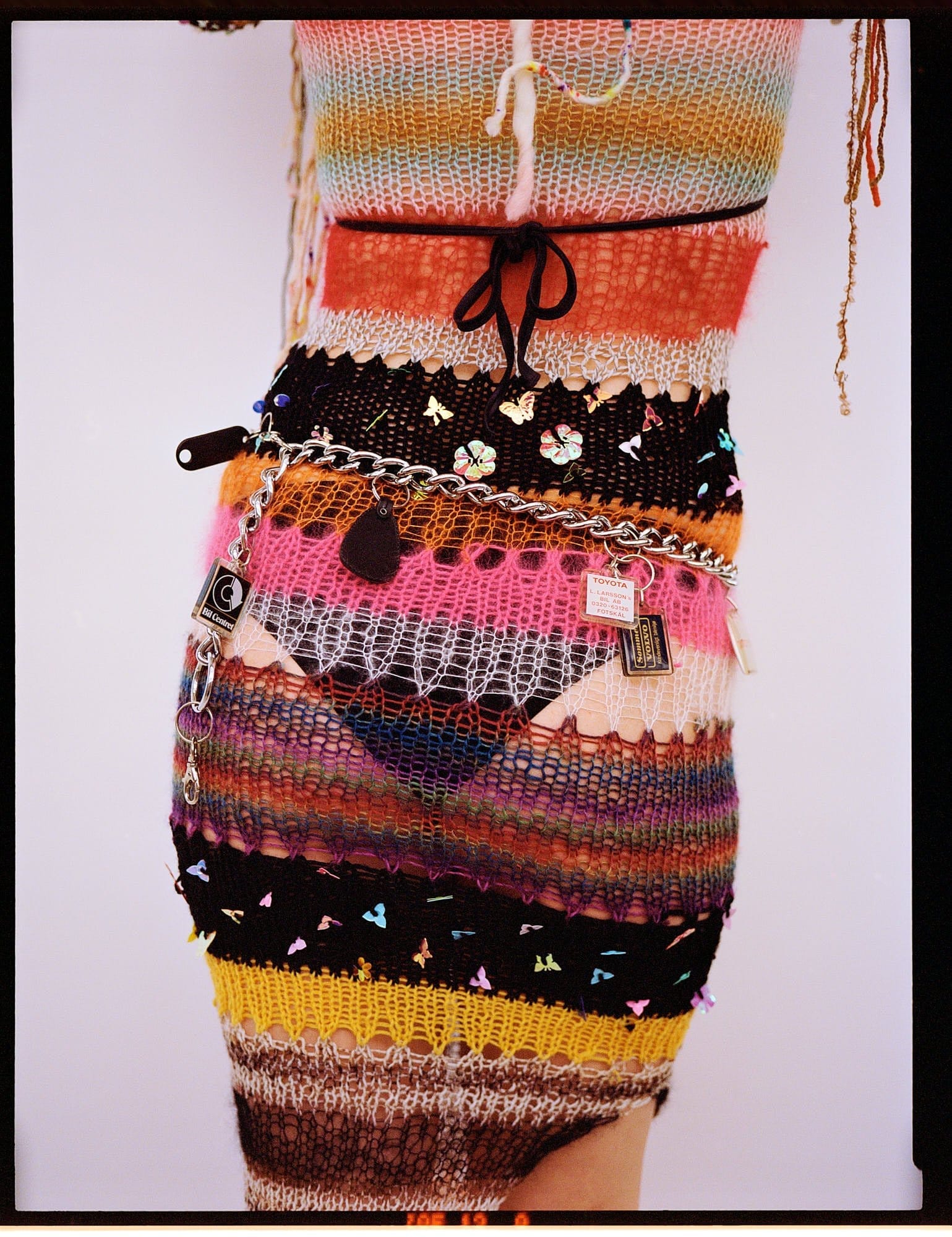
Belt by: STAMM Exchange
Cutting down on consumption, overall, is one thing that Lærke advocates – right down to the wool you buy.
“You should buy your wool from small vendors if you can,” she said. “I also think you should buy as little as possible and then use what you have.
“I find that my creativity is at its best when my material is limited. I realise this sounds crazy when you look around here at all the items I have, but what I mean is that whenever I set out to do a new jumper or whatever, I’m not dependent on having that particular wool. For instance, right now I’m out of black wool. Too bad. I’ll find something else to make with what I have.
“I think the most exciting things happen for me when I’m forced to think outside the box. So if I have the black wool right now, I could do the jumper, but if I only had the charcoal wool, I’ll have to rethink. And then something great usually happens.”
We’re talking about knitting, but we could be talking about anything. It doesn’t matter if you’re a knitter, a shopper, a chef or a programmer, the idea that we have enough right now is revolutionary. Make the best of what you’ve got. Think hard before you make or buy something new. Then if you’re going to do it, just make sure you break the rules.
Second image: Lærke is wearing black silk satin dress by Day Birger et Mikkelsen
A community of knitters
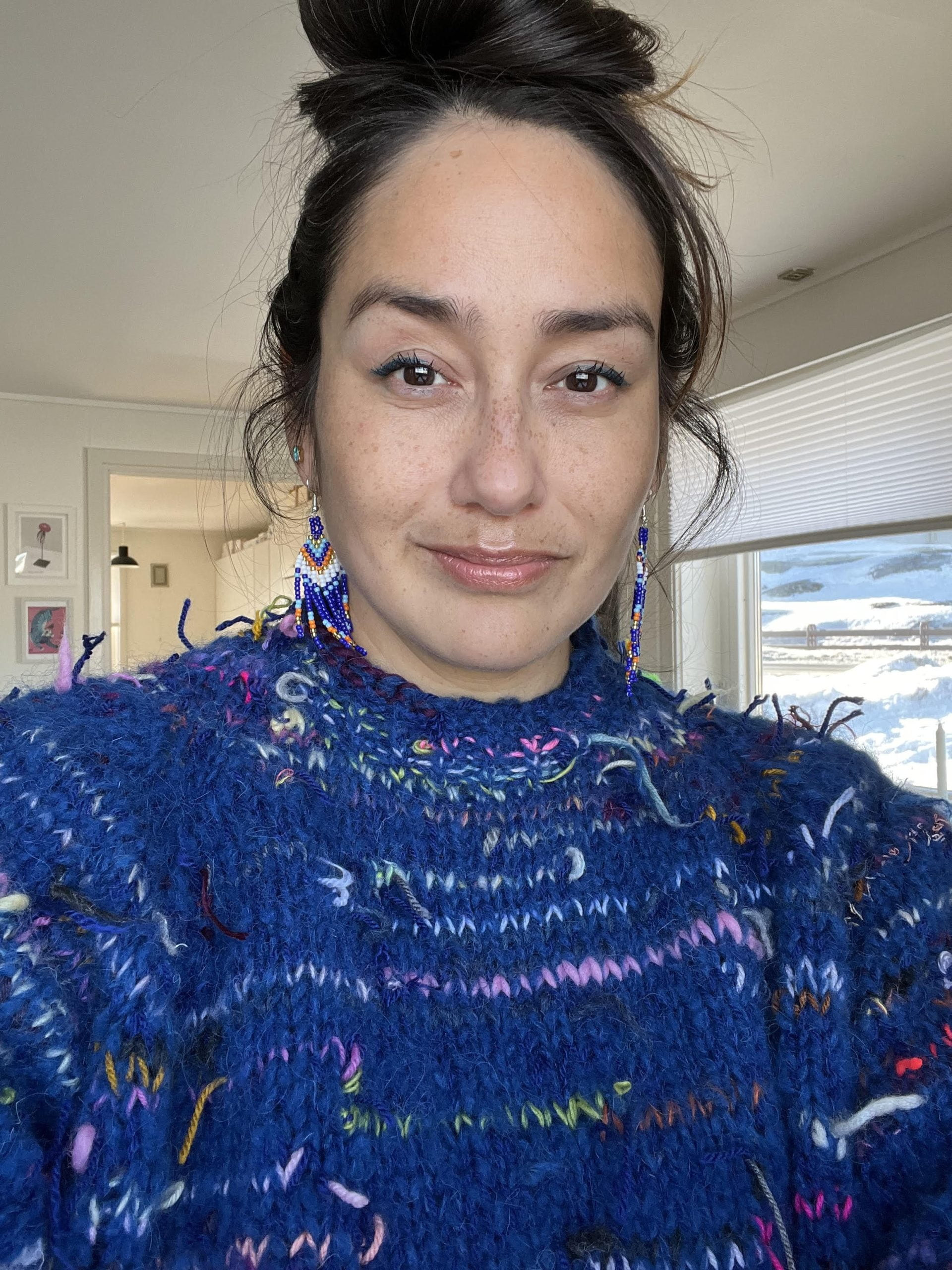
Lisbeth (@lisbethkarline), Nuuk, Greenland
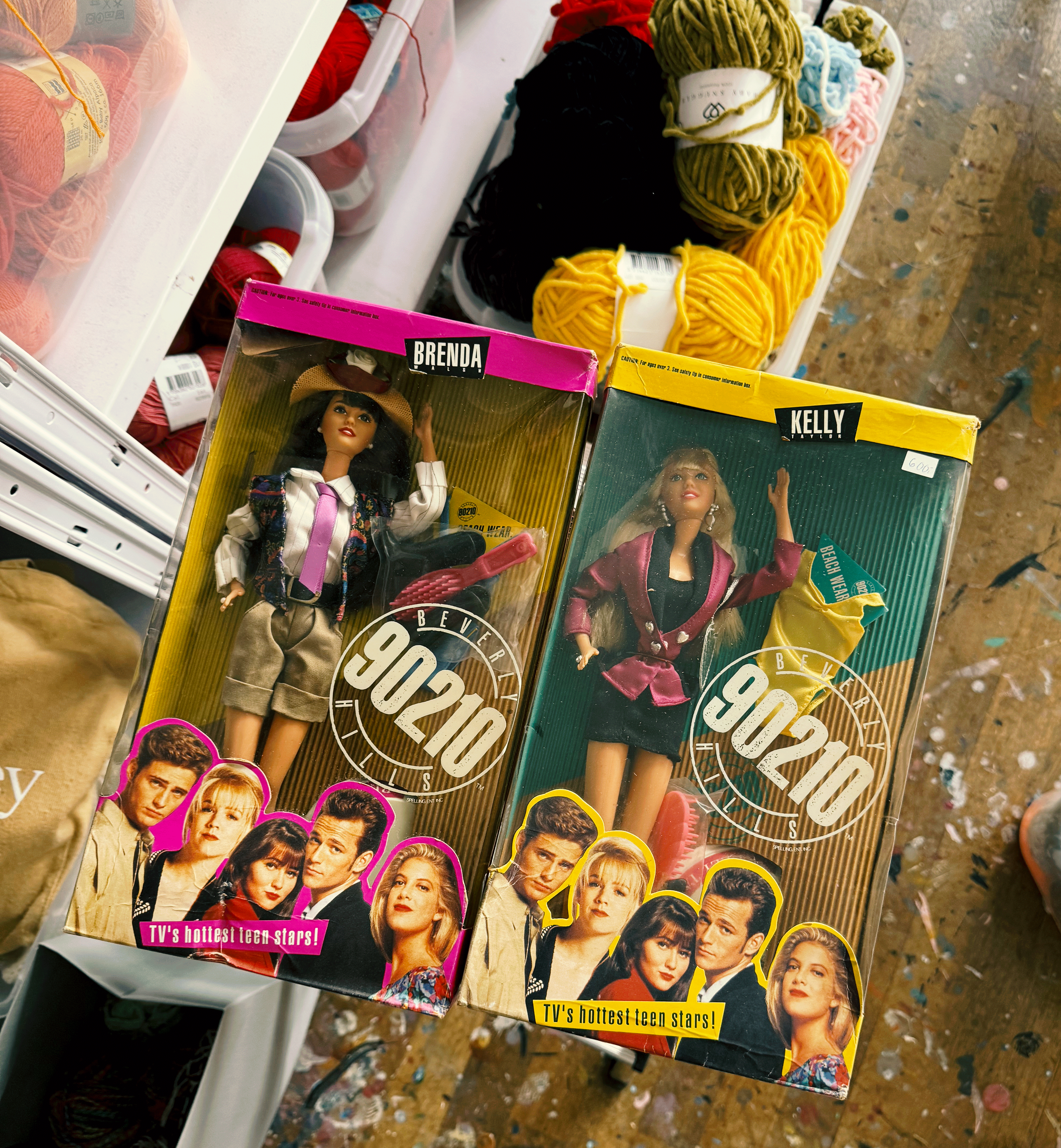
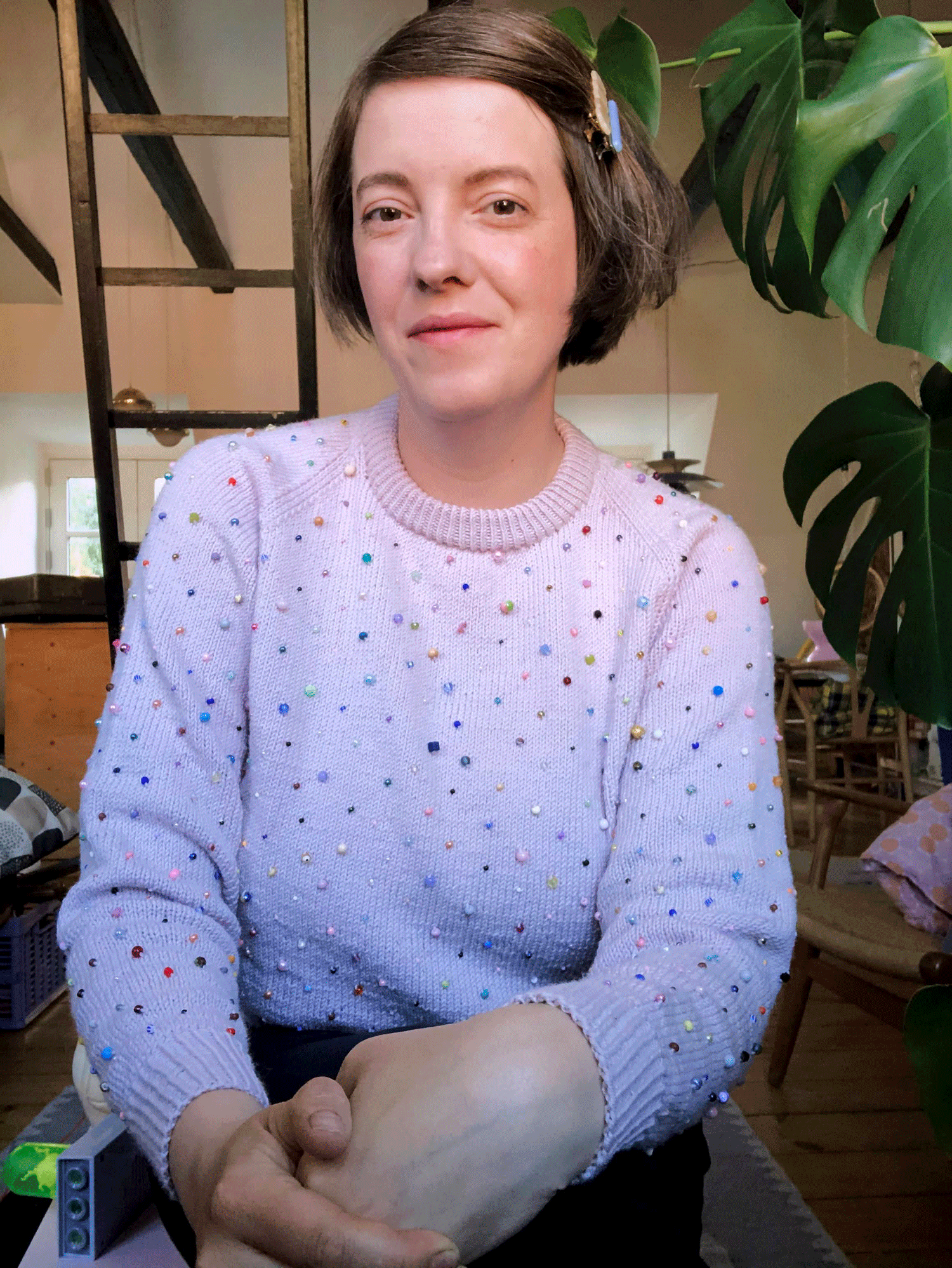
Mette(@ungtblod), Copenhagen, Denmark


Casper (@homostitch), London, UK
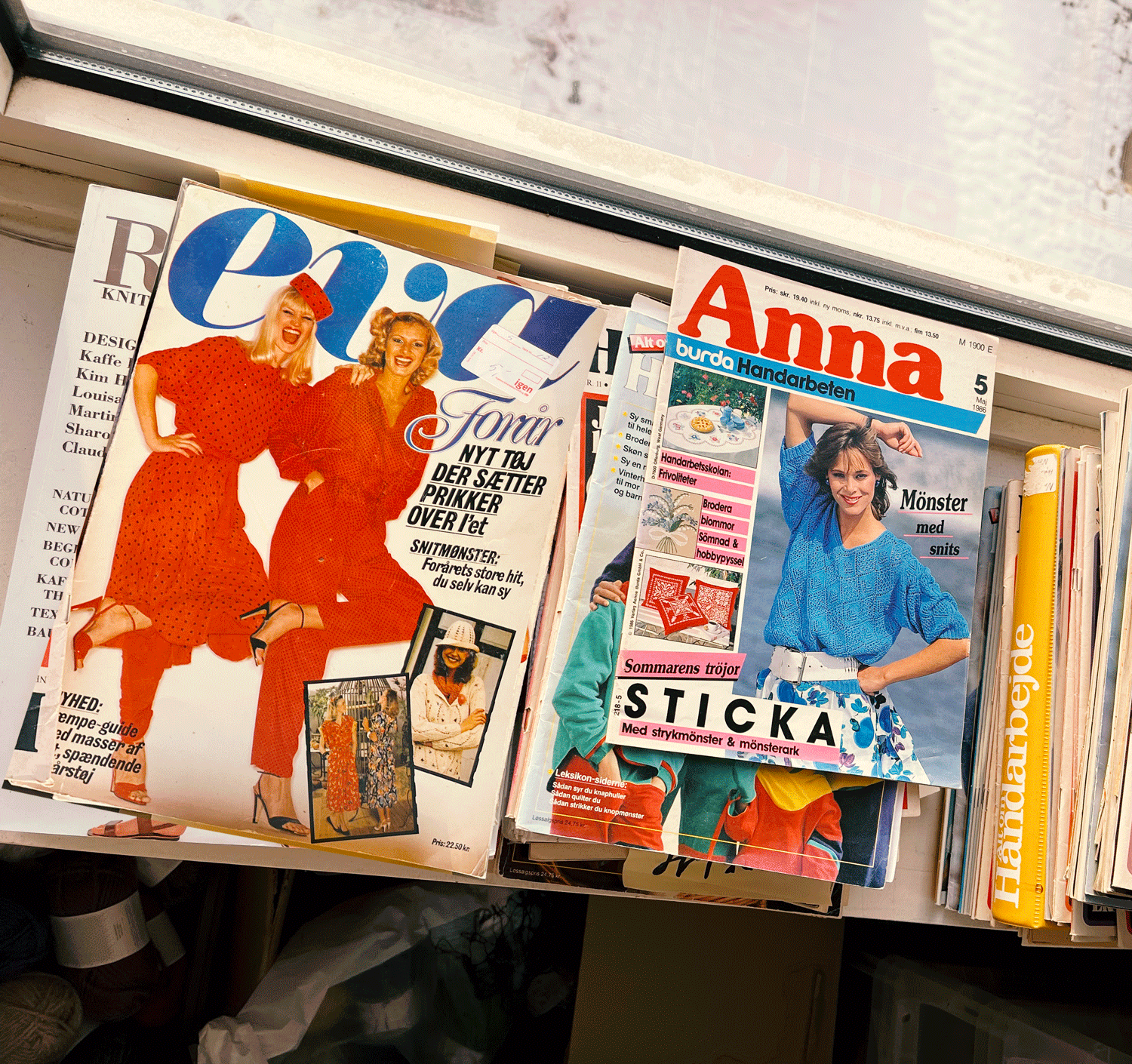

Emily (@emilyvtknits), Texas, US
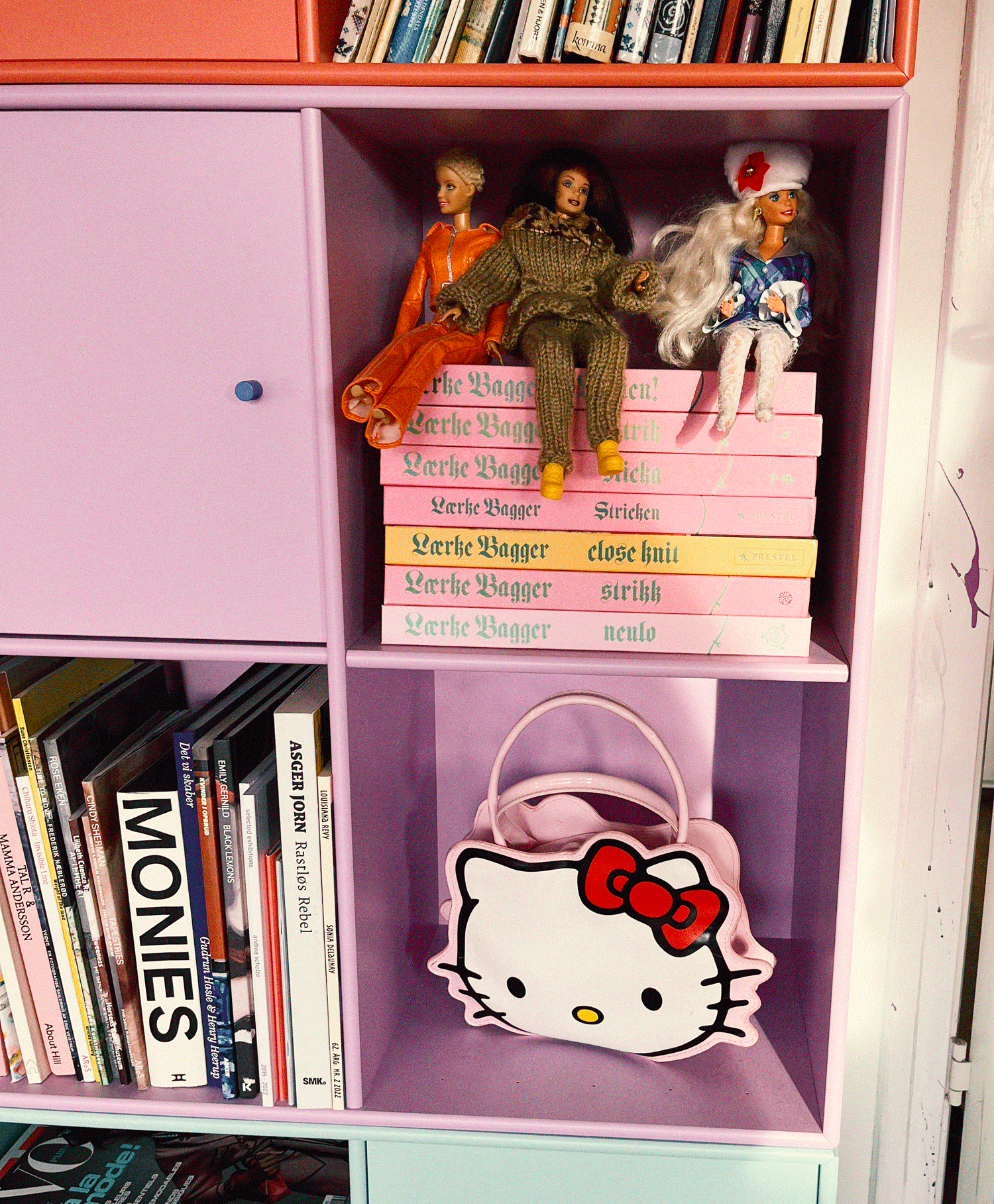
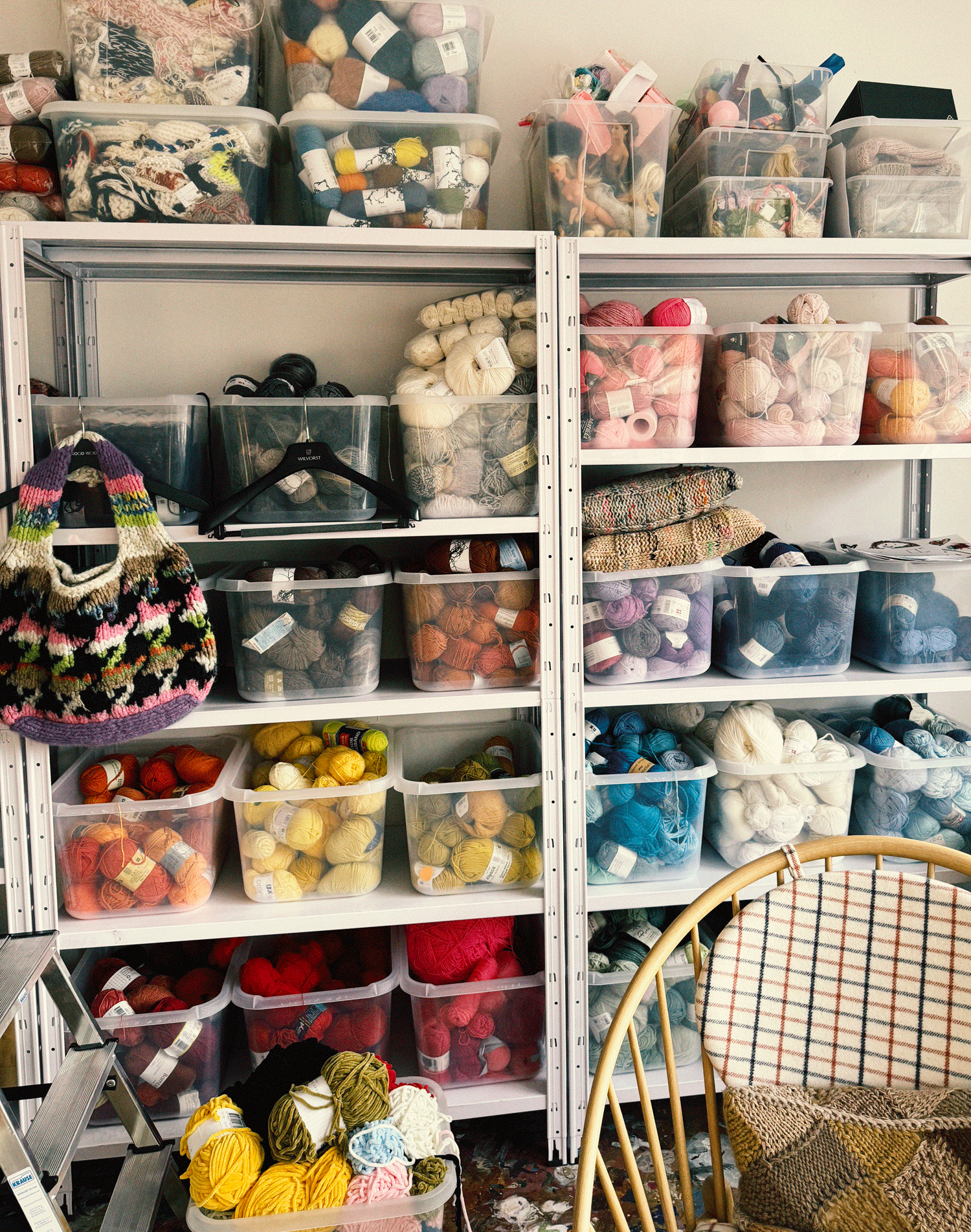

Lisbeth (@lisbethkarline), Nuuk, Greenland


Mette(@ungtblod), Copenhagen, Denmark


Casper (@homostitch), London, UK


Emily (@emilyvtknits), Texas, US


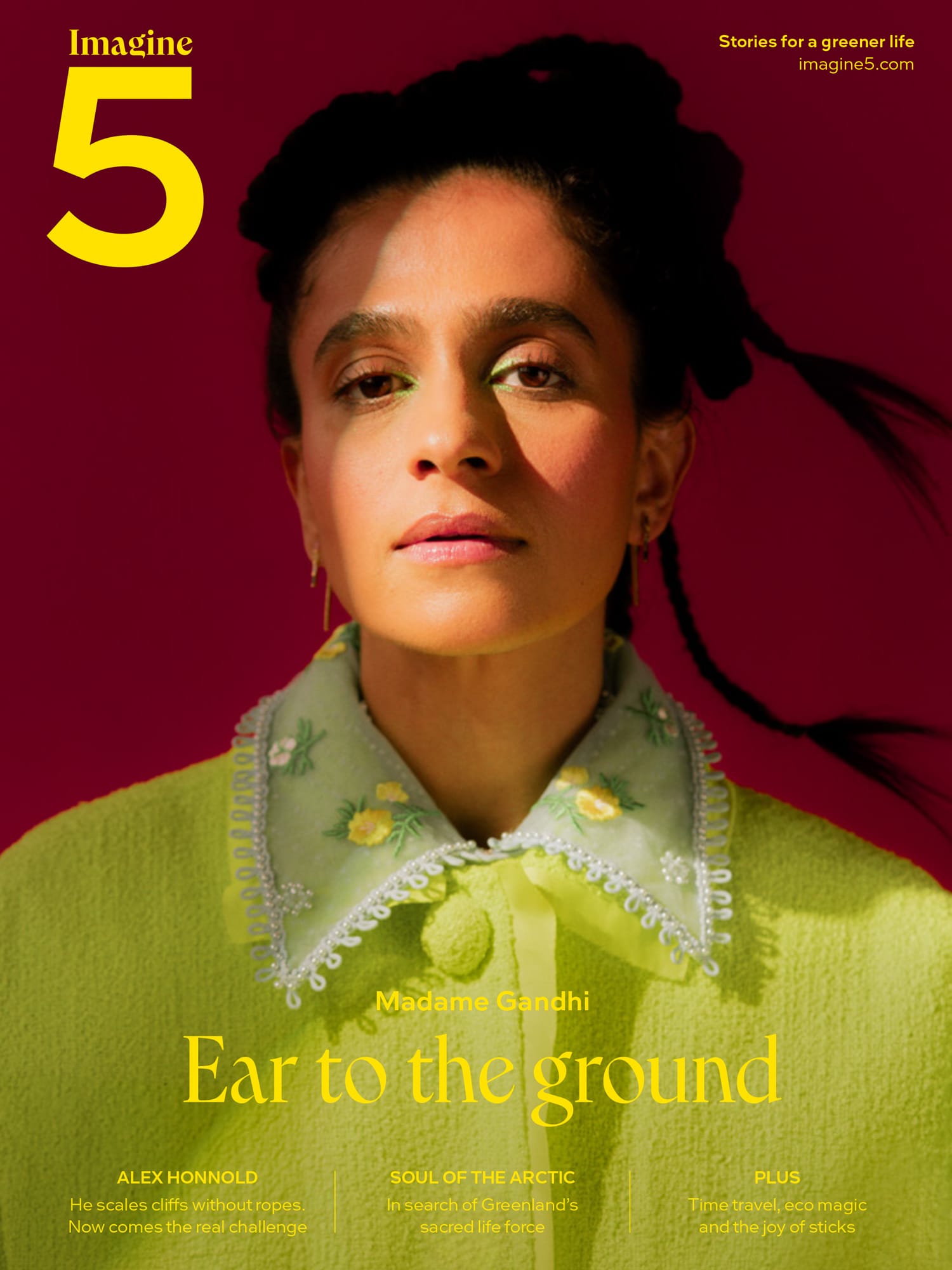
Cover star Madame Gandhi on the sounds of the Antarctic, free climber Alex Honnold reveals his biggest challenge yet, actor Rainn Wilson embraces his soulful side and much much more!
CULTURE FOR CLIMATE
BIG IDEAS
